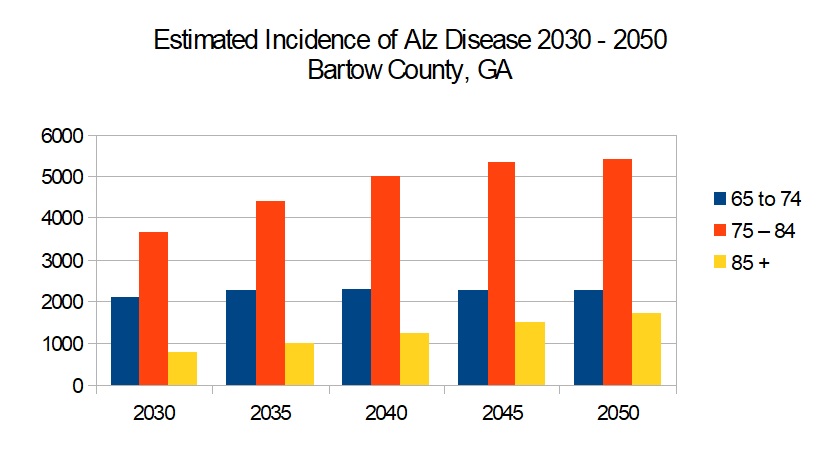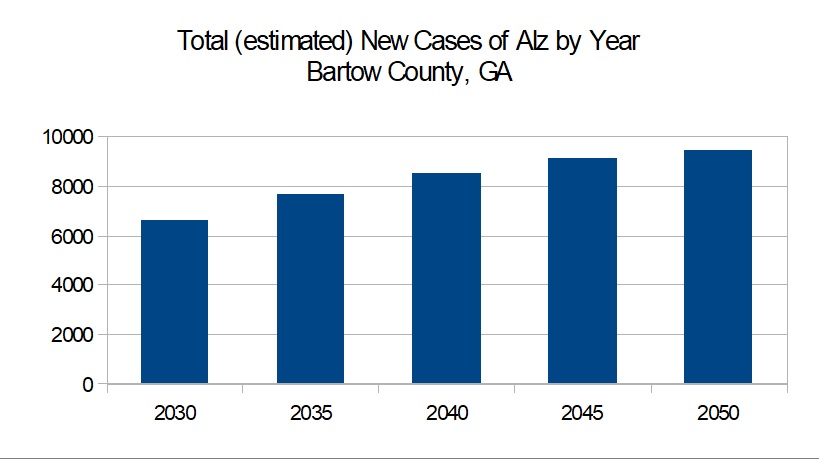
It is not your imagination: Providers at all levels of senior care are seeing an increase in referrals for patients with dementia. According to the Alzheimer’s Association, the projections for new diagnoses of Alzheimer’s disease in the US is staggering, approaching 15 million by the year 20501. This increase is partially due to improved family and physician awareness, improved diagnostic assessments and improved overall health.
To complicate matters a bit, research by Brown and Wolf2 discovered an emerging trend with senior care patients combining serious mental disorders and dementia. This dual diagnosis accounted for roughly 6% of all Medicare beneficiaries between 1991 and 2010.
I realize that the above data may be a bit abstract, so here’s a specific example. I recently completed an estimation of Bartow County (GA) residents who are likely to receive a new diagnosis of Alzheimer’s disease from 2030-2050 by age groups. Bartow County is approximately one hour north of Atlanta. They are experiencing population growth and could represent an opportunity for business expansion.

Here’s a different look at the same data. This chart shows the estimated total of new Alzheimer’s cases per year from 2030 to 2050.

The Bartow County (GA) data clearly show that providers at all levels of the Senior Care continuum will need to be prepared for an increased demand for dementia care.
You can replicate this analysis for any geographic area in just two (or maybe three) steps. First, find population estimates. These data are available from Census.gov or directly from your state’s website using the search phrases: “population estimates by county,” “census estimates,” “population estimates by age group”.
Second, you will need to do some math. For the Bartow County, GA analysis, I used the Alzheimer’s Association prevalence estimates by age groups (65-74 years = 74%, 75-84 years = 44%, 85+ = 38%). Third, if you get stuck somewhere along the line, contact me, I’ll help.
Calculating the approximate need for dementia services is the first step in deciding to develop a business strategy. We’ll talk more about this in a future post. Next, we’ll open my case files and discuss what REDIRECTION really means.
I’d love to hear your comments.
References
1 https://www.alzheimers.net/resources/alzheimers-statistics/.
2 Brown, MT & Wolf, DA (2018). Estimating the prevalence of serious mental illness and dementia diagnoses among Medicare beneficiaries, in the health and retirement study. Res Aging, Aug; 40(7); 668-686.
Mark Pavlovich is the president of Yardstik Behavioral Analytics and a veteran senior care professional.




